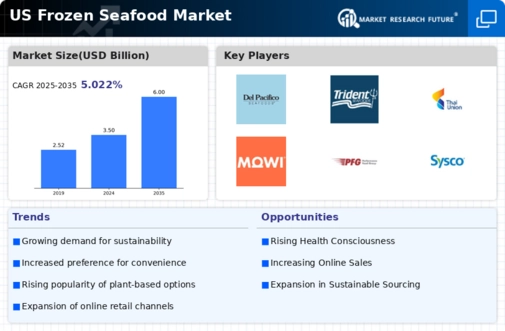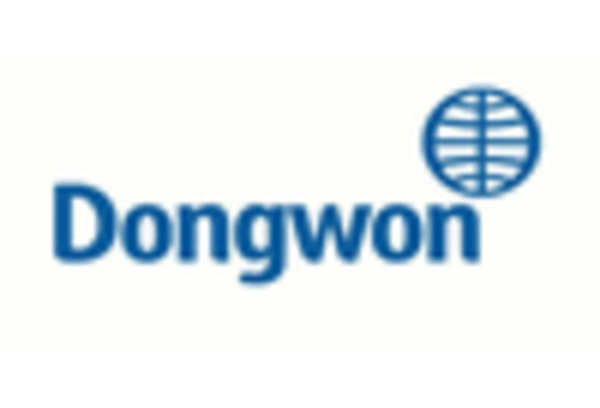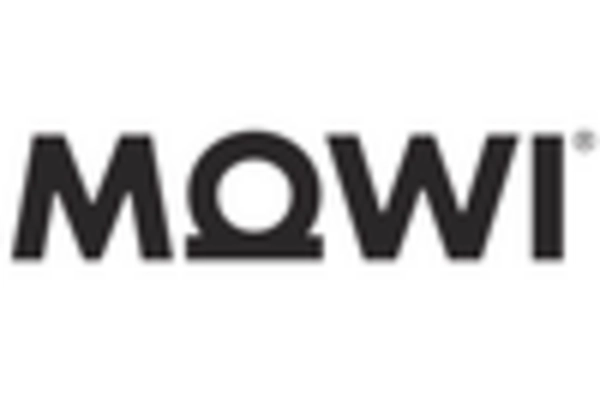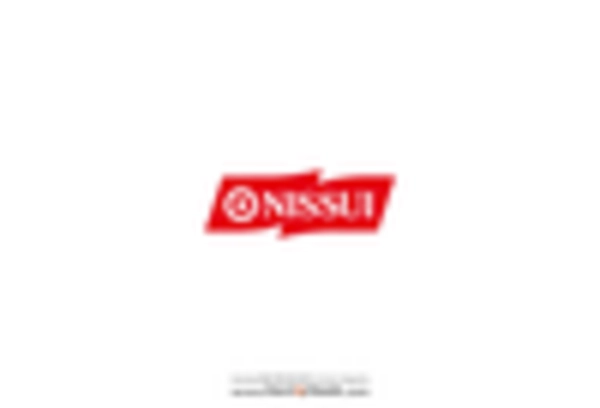Innovations in Freezing Technology
The frozen sea-food market is witnessing advancements in freezing technology that enhance product quality and shelf life. Innovations such as flash freezing and cryogenic freezing are being adopted to preserve the freshness and flavor of seafood. These technologies allow for quicker freezing times, which helps maintain the texture and nutritional value of the products. As a result, consumers are increasingly drawn to frozen seafood that retains its quality, leading to a potential increase in market share. Additionally, these technological improvements may reduce waste and improve supply chain efficiency, further benefiting the frozen sea-food market. The integration of such innovations is likely to attract both consumers and retailers, fostering a competitive edge in the market.
Expansion of Retail Distribution Channels
The frozen sea-food market is experiencing an expansion of retail distribution channels, which is facilitating greater access to frozen seafood products. Supermarkets, specialty stores, and online platforms are increasingly offering a wide range of frozen seafood options, catering to diverse consumer preferences. This trend is particularly evident in the rise of e-commerce, where online grocery shopping has become more prevalent. Market data suggests that online sales of frozen seafood have increased by approximately 25% in the last year alone. The convenience of purchasing frozen seafood online, combined with the ability to compare prices and products, is likely to attract more consumers to this market. As distribution channels continue to diversify, the frozen sea-food market is expected to see sustained growth.
Rising Demand for Convenient Food Options
The frozen sea-food market is experiencing a notable increase in demand for convenient food solutions. As consumers lead busier lifestyles, the preference for ready-to-cook and easy-to-prepare meals has surged. This trend is reflected in the market data, which indicates that the frozen food segment, including seafood, has grown by approximately 20% over the past five years. The appeal of frozen seafood lies in its long shelf life and minimal preparation time, making it an attractive option for families and individuals alike. Furthermore, the availability of diverse frozen seafood products, such as shrimp, fish fillets, and seafood blends, caters to various culinary preferences, thereby enhancing its marketability. As convenience continues to be a priority for consumers, the frozen sea-food market is likely to thrive in the coming years.
Increased Awareness of Nutritional Benefits
The frozen sea-food market is benefiting from a growing awareness of the nutritional advantages associated with seafood consumption. Research indicates that seafood is rich in essential nutrients, including omega-3 fatty acids, which are known to promote heart health and cognitive function. As health-conscious consumers seek to incorporate more nutritious options into their diets, the demand for frozen seafood products has risen. Market data suggests that seafood consumption in the US has increased by approximately 15% over the last three years, with frozen varieties gaining popularity due to their convenience and accessibility. Retailers are responding to this trend by expanding their frozen seafood offerings, thus enhancing the visibility and availability of these products. This heightened focus on nutrition is expected to drive growth within the frozen sea-food market as consumers prioritize healthful eating.
Growing Popularity of Seafood in Culinary Trends
The frozen sea-food market is experiencing a surge in popularity due to the increasing incorporation of seafood in contemporary culinary trends. As consumers become more adventurous in their dining choices, seafood is being featured prominently in various cuisines, including Asian, Mediterranean, and fusion dishes. This trend is supported by market data indicating that seafood sales have risen by approximately 10% in restaurants and food service establishments over the past two years. The versatility of frozen seafood allows chefs and home cooks to experiment with different recipes, further driving its appeal. As culinary trends continue to evolve, the frozen sea-food market is poised to benefit from the growing interest in seafood-based dishes.

















Leave a Comment